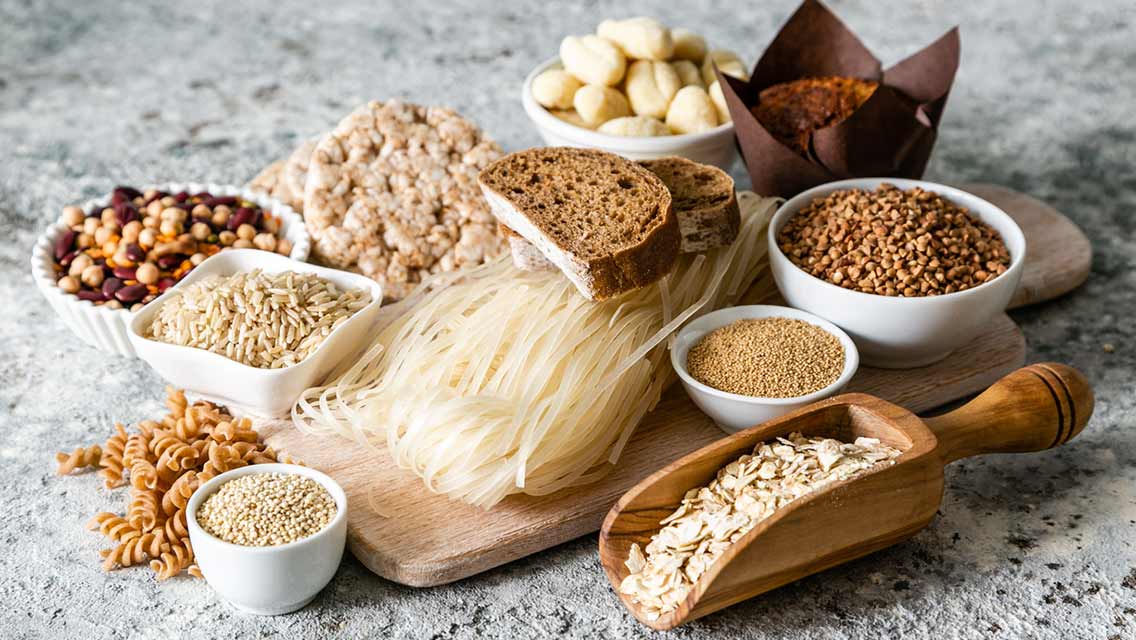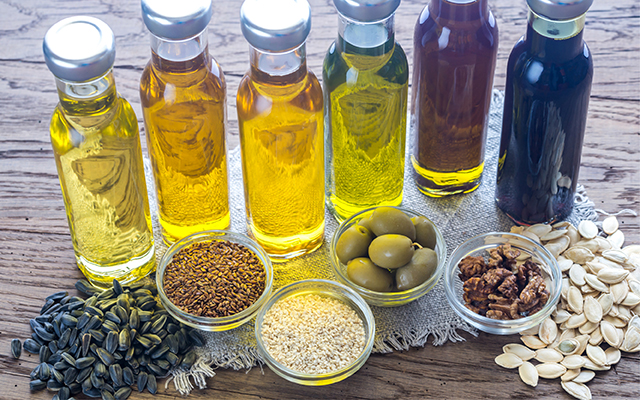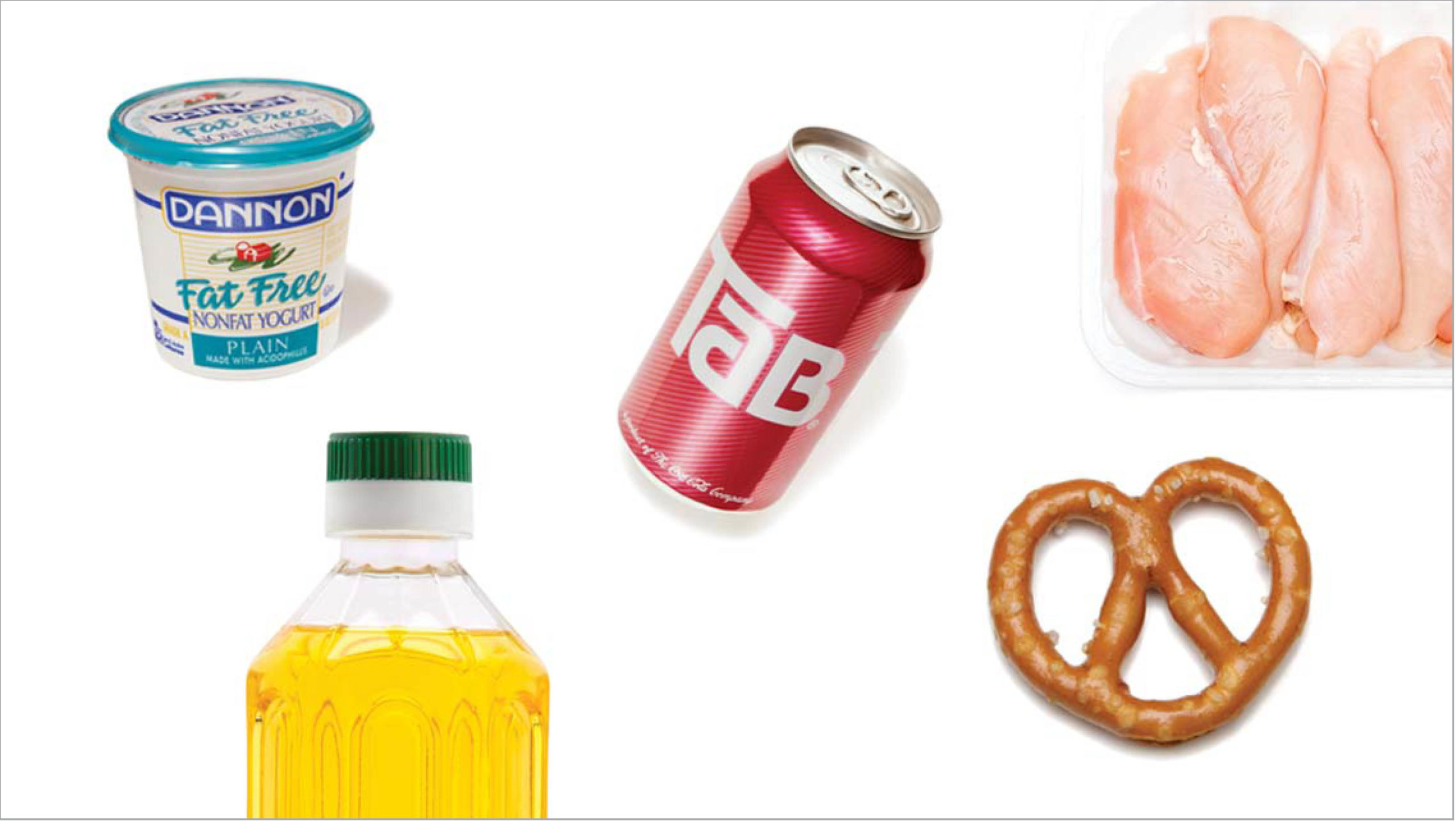Before they fell on tough times, carbs had a pretty decent run. Remember the halcyon days of carbo-loading, when carbs were considered safe and healthy, the very center of an optimal diet? Back then, carbs were seen as “clean fuel” – the antidote to our dark desires for dastardly fats and heavy, heart-clogging meats. Carbs connoted energy for people on the go. And, man, we had it going in the ’80s and ’90s, didn’t we?
Then protein power came along, and carbs’ glory days came to a hasty end. Suddenly carbs were seen as a pox upon our plate, and “low-carb” became a sexy marketing label, fused in our minds with the ripped, lean-and-hungry look that high-protein, low-carb diets promised to deliver.
A lot of folks did a total about-face with their eating at this point, and started scouring nutrition labels with an eye to eliminating every last carb they could. For some people, that meant supplementing steak lunches with protein bars while all but swearing off everything from rice and oatmeal to fruits and veggies. This dramatic reversal made a lot of seasoned nutritional types shake their heads in dismay – but not in surprise.
“About every decade, a new diet trend takes over the country,” acknowledges Susan M. Kleiner, Ph.D., RD, owner of a Seattle-based nutrition-consulting firm called High Performance Nutrition and affiliate assistant professor in the department of medical history at the University of Washington School of Medicine. “We had the Dr. Atkins Diet Revolution protein diet in the 1970s. The 1980s were all about increasing carbohydrates. The 1990s were for cutting out fat. Now we’re back to eating more protein and cutting out carbohydrates. We haven’t shown a lot of interest in moderation.”
All Carbs Not Created Equal
There’s no doubt in Kleiner’s (or anybody’s) mind that Americans have been stuffing down far too many chips, sodas, sticky buns, pizza dough and pop tarts. But in cutting down on our carb intake overall, they say, we could be throwing some perfectly good babies out with the bath water. In fact, Kleiner and many other experts suggest that in indiscriminately cutting down on carbs, many people are now making the very same mistake made by so many during the “low fat” mania of the ’90s – namely, not discerning between good and bad types.
The key to eating carbs wisely lies less in strictly minimizing your quantity of carb grams than it does in consistently attending to the quality of your carb choices.
The key to eating carbs wisely, these experts insist, lies less in strictly minimizing your quantity of carb grams than it does in consistently attending to the quality of your carb choices. You can’t go strictly by grams or servings, they say, because carbohydrate sources vary so enormously in many respects. For example, 20-gram servings of two different types of carbs (such as lentils and rice cakes) may be totally different sizes, digest at different rates, have different effects on your blood sugar, carry different nutritional and energetic payloads, and differ radically in their impacts on feelings of hunger, fullness and satisfaction.
By evaluating the nutritional and energetic profiles of various carbohydrate food sources, suggests Kleiner, and by understanding how they perform in your body, you can make smarter carb choices. Making those smart choices, in turn, gives you a much better shot at maintaining your ideal weight, sustaining high energy levels and getting the wide range of nutrients your body needs to stay healthy.
Carbs, Insulin and You
So, exactly what do you need to know?
Let’s start with three basic rules:
Rule 1: Your need for carbohydrates is dictated by your need for energy. Carbs are your body’s primary source of fuel – one of just three (the other two being protein and fat) available to you. Except in starvation situations, carbs are your brain’s only fuel source. Carbs are essential to both physical energy and mental clarity, so blindly slashing away at your carb intake in an effort to stay slim and healthy is counterproductive.
Yes, eating too many carbs will overload your system with potential energy it can’t use and thus make you fat. And some carbs (particularly refined grains and sugars) can make your blood sugar levels abruptly spike up and then fall, which leaves you feeling hungry and is bad for you in a variety of ways. But eating too few carbs presents its own problems. As a rule, cheating your body out of carbs will leave you feeling sluggish, dull-witted, weak and uninterested in exercise. It will also cheat you out of a whole raft of important nutrients, enzymes and phytochemicals. Which brings us to…
Rule 2: When selecting carb-rich foods, nutrition counts. The portion of your food intake you allocate for carbs is responsible for carrying the vast majority of your nutrients and phytochemicals, so you’d be crazy to squander your daily carb account on empty calories.
As a rule, fruits, vegetables, whole grains, legumes and nuts deliver a far more powerful nutritional punch than refined grains, starches and sugars. They also contain more healthy water and fiber and a lower caloric density. As a result, eating whole, unrefined foods helps you satisfy your hunger and keep it at bay longer. So eating a wide variety of nutrient-rich carbs is one of the best things you can do for your health.
Rule 3: Once inside your body, all the carbohydrates in your food break down into glucose (sugar). That sugar is either:
1) used immediately for energy
2) stored as glycogen in the liver and muscles for easy access,
3) turned into fat for longer-term storage.
Various carbohydrate-rich foods contain different concentrations of glucose, however, and they release it into the bloodstream at different rates. This can make a difference in how well and how often your body gets into burning stored fat for energy. Getting big hits of glucose and insulin in your system reduces your body’s opportunities to burn fat for fuel, and increases its opportunities to store it.
Faster-digesting carbs – such as sugars, some starches and grains that have been processed to remove their germ and bran – tend to catalyze greater blood-glucose and insulin responses. Thus, not only are they less nutritious, they also have a greater chance than slower-digesting carbs of resulting in extra padding on your body.
The role of insulin in all this is important and worth addressing. Insulin is the hormone your pancreas sends out in order to escort the sugar molecules where they need to go – and the more sugar that hits your bloodstream at any given time, the more insulin is required. If you begin performing some kind of strenuous exercise shortly after you eat a big helping of fast-digesting carbs, your insulin will have good success in getting your body to use most of the available glucose for energy. If you are sedentary, it doesn’t work so well.
A healthy pancreas is capable of pumping out a lot of insulin, and when you eat a bunch of fast-releasing carbohydrate, that’s precisely what it does. But having too much insulin circulating in your blood (which occurs whenever you eat too much for your energy demands) is bad for you. For one thing, insulin signals your cells to be receptive to storing not just glucose but also fats that are circulating in the blood. Too much circulating insulin promotes fat storage and makes it hard for you to burn the fat you already have.
Over time, an overproduction of insulin can predispose you to lowered immunity, insulin resistance, type 2 diabetes, cardiovascular disease and hypertension. It also raises oxidation rates, which can make you more susceptible to premature aging and cancer. This may seem like an awful lot to have riding on your carbohydrate choices, and it is. Fortunately, there’s a useful tool that makes some of this information easier to grasp and apply. It’s called the Glycemic Index.
Glycemic Index
The Glycemic Index (GI) is a laboratory-defined scale that measures and ranks how quickly various food sources of carbohydrate turn into glucose (blood sugar) in the body. Previously used primarily by diabetics, the GI is now becoming a more widely accepted tool for helping all kinds of people – including athletes, coronary patients and those trying to lose weight – gauge carbohydrate quality and make strategic food-selection decisions.
The Glycemic Index is a widely respected tool in Europe and Australia and is slowly gaining ground in the United States, where it remains controversial (the Harvard School of Public Health recommends its use for everyone; the American Dietetic Association does not). One of this year’s best-selling diet books, The South Beach Diet by cardiologist Arthur Agatston, MD, has recently raised its profile substantially.
Scientists measure the GI of various foods by comparing the blood-glucose responses they create in the body. Specifically, they compare the responses created when test subjects ingest a controlled portion of carbohydrate-containing food (like spaghetti or orange juice) to responses generated when the subjects ingest the exact same quantity of carbohydrates delivered in the form of a pure glucose solution (in the past, a piece of white bread was sometimes used as the standard). The glucose-solution response is given a standard GI value of 100, and the test-food response is ranked against it, thus producing a relative GI value of 1 to 100.
“High GI” foods (like boiled potatoes) are those that cause reactions similar to pure glucose: They have a ranking of 70 or higher. “Intermediate-GI” foods (like sweet corn) have a ranking between 56 and 69.
“Low GI” foods (such as fresh peaches or lentils), have a ranking of 0 to 55. To date, well more than 700 foods have been indexed, mostly by Australian researchers (for a simple description of the Glycemic Index, and a list of some of the most common foods, see www.mendosa.com/gidigest.htm).
Generally, carbs that break down quickly during digestion (because they have been milled, have simple molecular structures, are low in dietary fiber, etc.) have high GI values. Carbohydrates that break down slowly (because they have more complex molecular structures, contain more dietary fiber, etc.) release glucose into the bloodstream more gradually and have lower GI values.
Practically speaking, the speed with which a given food delivers its glucose payload depends on a variety of factors, including (among other things) how it is prepared or cooked, and the other food substances with which it is eaten.
Fats, vegetables, meats and legumes are all low-GI foods that serve to slow the release of glucose contained in other foods (this is why the GI of high-fat items such as potato chips, cookies and ice cream is surprisingly low). Obviously not all low-GI foods are healthy.
Also, some extremely healthy high-GI foods, such as watermelon (which carries a GI of 72), have very little carbohydrate per serving, so while gram-for-gram its blood-glucose response might rank similarly to glucose, the actual impact of a serving of watermelon (a factor referred to as the “Glycemic Load”) is negligible.
The Glycemic Index represents some fairly complex biochemistry, and is by no means foolproof in its application, but its core message is simple:
Eating more of your carbs as nutritious, low-GI foods will help you stay healthier and slimmer.
It’s important to understand all the caveats and subtleties of the Glycemic Index before you attempt to wrap your entire diet around it. As a rule, though, if you emphasize whole, unrefined foods while staying away from added sugars and unhealthy fats and moderating your intake of refined grains, potatoes and other starches, you’ll be doing pretty well. If you make a point of eating side salads or fresh veggies along with your high-GI meals, and of adding some protein or a little healthy fat to high-GI snacks, you’ll be doing even better.
Picking Your Plate
In the epic drama of carbohydrates, it turns out that separating the Good, the Bad and the Ugly isn’t really all that hard.
“Good carbs” are those that are:
1) eaten in accordance with your activity levels (you should eat more and simpler carbs when you are exercising or active, fewer when you are not);
2) that contain an ample supply of nutrients (vitamins, minerals and essential fatty acids);
3) that keep you feeling energized and satisfied for an extended period of time; and 4) that don’t contain unhealthy added fats, sugars or chemicals.
“Bad” carbs are those that:
1) contain fuel your body can’t currently use;
2) abruptly spike and drop your blood-glucose levels and/or leave you craving more; or
3) come packaged with an excess of fats (particularly trans fats) and sugars.
“Ugly” carbs are really just “Bad” carbs that you find addicting and tend to eat in excess, or that you eat to the exclusion of healthier foods (e.g., you grab that bag of chips or crackers instead of a bowl of salad, soup or other real grub).
In reality, there’s room in every diet for plenty of the Good and even for a certain amount of the Bad. It’s the “Uglies” you have to watch out for. That said, you’re always better off designing your eating around what you do want to eat, rather than what you shouldn’t. So when it comes to selecting your carbs, focus first on how you’ll get more of the good stuff on your plate, aiming for healthy carbs to account for between 40 and 60 percent of your caloric intake.
There are a handful of people who can cope well on a lower-carb diet, notes Kleiner, but the vast majority of people will have a hard time. Plus, she says, there’s no reason to avoid carbs, as long as you’re making nutritious choices and keeping your carb intake in line with your energy requirements.
Go too long without enough carbohydrate she says, and you’ll know it: “You start feeling like the second day of a hangover. Most people can function, but they feel pretty horrible.”
The best part of clearing out refined grains, sugars and other unhealthy, high-GI carbs is that it not only helps you feel more energetic and active, it also creates space for all sorts of more nutritious foods in your diet. You wind up eating a wider array of veggies, fruits, legumes and healthy fats by default – a very good thing for your weight, your energy and your health.
Making the Most of Carbs
- Don’t habitually deny your body an adequate supply of healthy carbs. If you find your energy levels flagging or your performance (in the gym or at work) suffering, consider when you last had a high-quality carb infusion.
- Fuel according to your real needs (vs. habit, custom or convenience). Throughout the day, week and season, gear your carb intake up or down based on your anticipated energy output. Before you grab a snack or sit down for a meal, ask yourself, “Over the next few hours, what am I going to be doing? What are my mental and physical energy demands going to be?” Then carbo-load (or unload) accordingly.
- Know the glycemic index and glycemic load of the foods you eat most often (and those you are most tempted by). Low-GI foods are generally a better choice if you are going to be relatively inactive or you want sustained energy for endurance. High-GI foods are best reserved for quick bursts of energy and should generally be eaten in smaller servings, either as a complement to lower-GI foods (e.g., jam on your whole-grain toast), or as “special occasion” treats.
- When eating high-glycemic foods, include a small amount of protein, fat or some high-fiber vegetables to help moderate the rate of digestion and insulin release.
- Strive to make the best nutritional choices possible, keeping in mind that complex carbs such as fruits, veggies and whole foods will tend to supply you with a better vitamin/mineral profile and more antioxidants and essential fatty acids. Also be sure to eat a wide variety of foods (vs. eating the same things several days or weeks in a row).
- Limit your intake of refined flours and sugars, and especially avoid eating them on their own. Avoid empty-calorie foods whenever possible, and avoid carbs that are fried or cooked with unhealthy oils. Also resist making your carbs vehicles for unhealthy toppings, fillings and spreads.
Inside the Glycemic Index
The Glycemic Index (GI) is a numerical scale that measures the speed with which the carbs in various food sources trigger a rise in circulating blood sugar. All other nutritional and satiety factors being equal (which they rarely are), lower-GI carbohydrate sources are generally considered better choices.
But because some foods contain more concentrated carbohydrates than others, you also need to consider the density of carbohydrates present in an average serving of a given food. This is represented by the “Glycemic Load” (GL) value. Average servings aside, you also have to consider how much of a given food you actually tend to eat: Larger servings translate into larger glycemic loads.
Here are a few examples:
| Corn Flakes Glycemic Index: 92 Glycemic Load: 24Baked potato Glycemic Index: 85 Glycemic Load: 26Puffed rice cakes Glycemic Index: 82 Glycemic Load: 17 Wonder white bread Watermelon Whole grain bread
|
White basmati rice Glycemic Index: 58 Glycemic Load: 22Banana Glycemic Index: 52 Glycemic Load: 12Brown rice Glycemic Index: 50 Glycemic Load: 16 Carrots Sweet potato Soy milk Oatmeal |
All Bran cereal Glycemic Index: 38 Glycemic Load: 4Apple Glycemic Index: 38 Glycemic Load: 6Lentils Glycemic Index: 29 Glycemic Load: 5 Cashew nuts Cauliflower Lettuce
|
For a comprehensive explanation of the Glycemic Index along with GI and GL values for more than 700 foods, check out The New Glucose Revolution: The Authoritative Guide to the Glycemic Index (Marlow and Co., 2003) by Jennie Brand-Miller, Ph.D., and Thomas M. S. Wolever, et al., or visit www.glycemicindex.com.
This article originally appeared as “Carbs: The Good, the Bad and the Ugly” in the November 2003 issue of Experience Life.





This Post Has 0 Comments